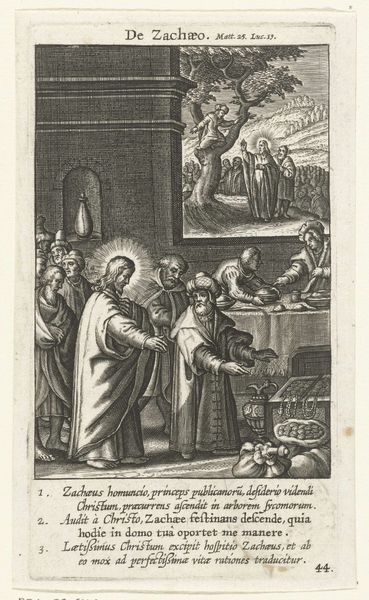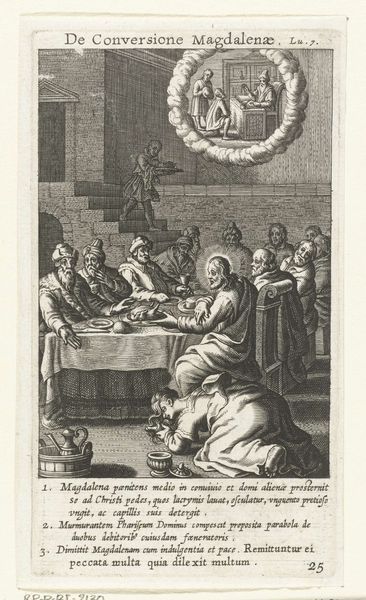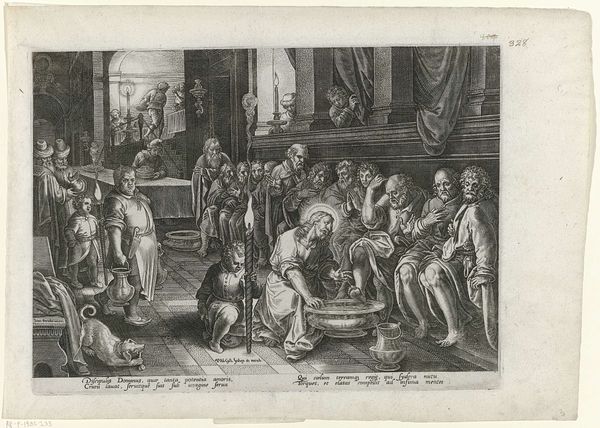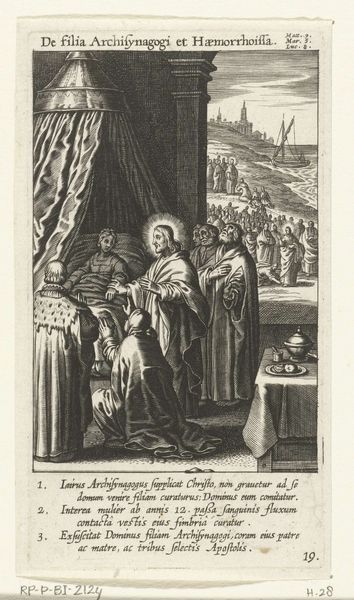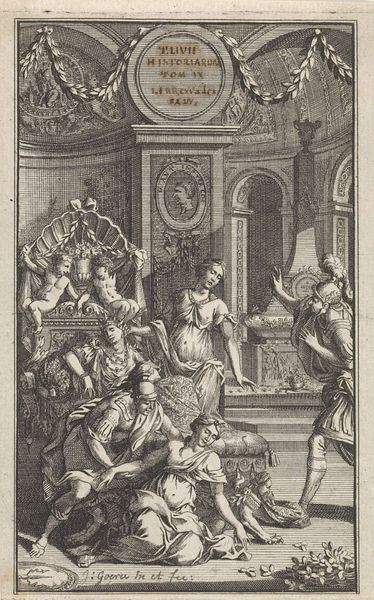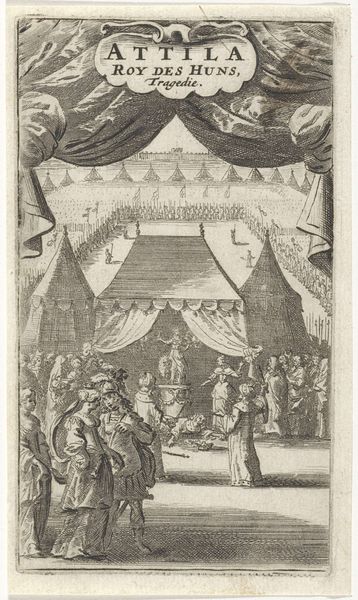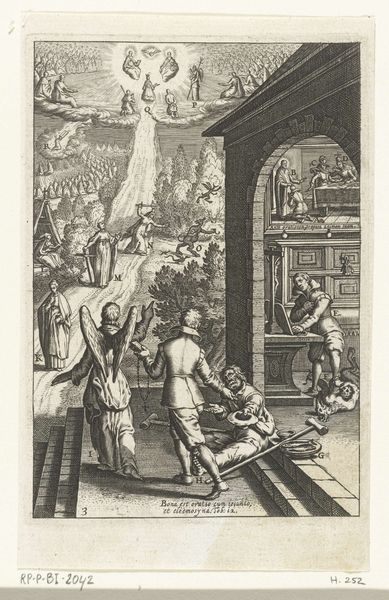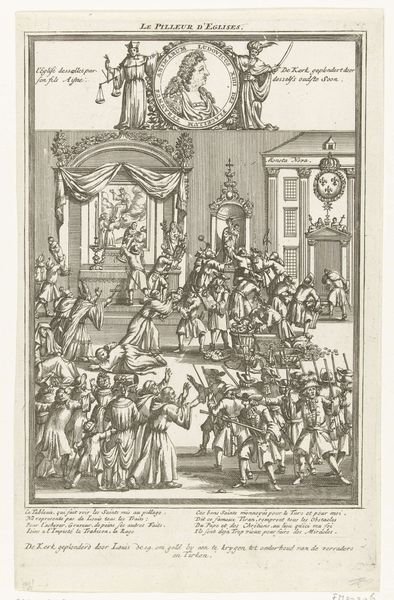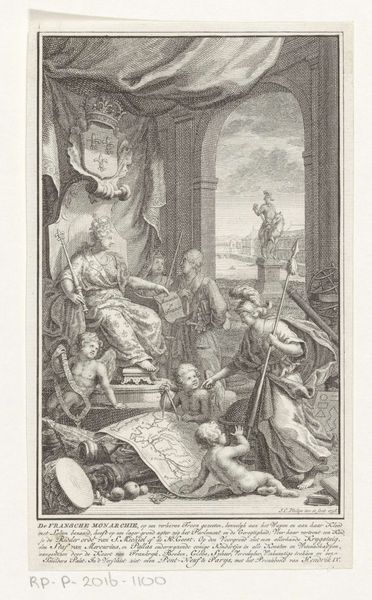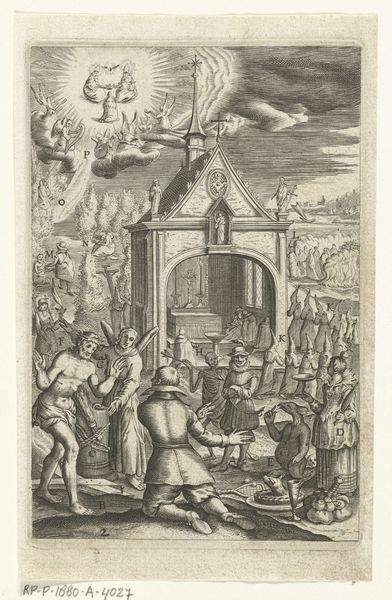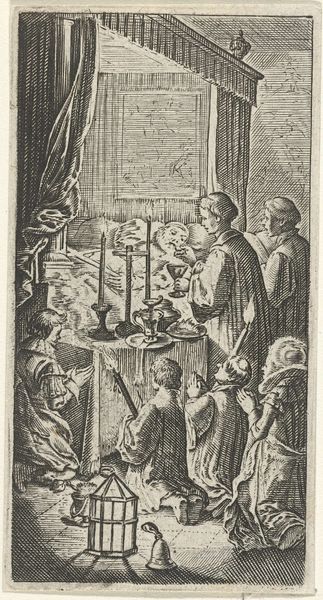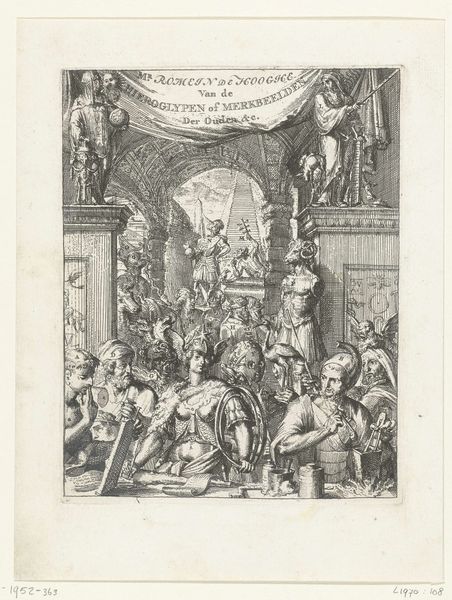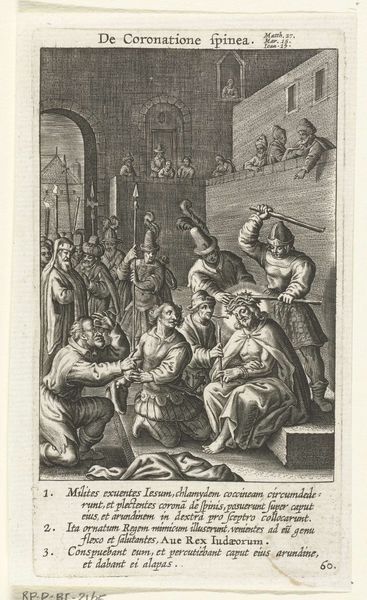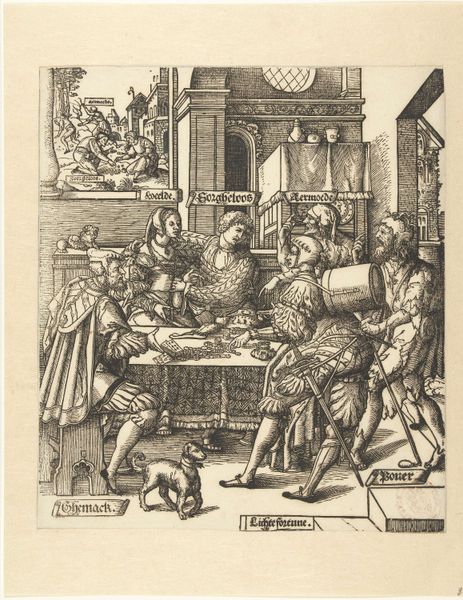
print, intaglio, engraving
#
baroque
# print
#
intaglio
#
old engraving style
#
northern-renaissance
#
engraving
Dimensions: height 134 mm, width 73 mm
Copyright: Rijks Museum: Open Domain
Curator: This engraving, attributed to Boëtius Adamsz. Bolswert, likely created between 1590 and 1622, is entitled "Bruiloft te Kana," or "The Wedding at Cana." The work is an intaglio print housed in the Rijksmuseum. What are your initial impressions? Editor: Stark contrasts. The almost severe black and white pulls me into its world, a sense of stark contrasts between divine intervention and very earthly feasts, creating an unsettling feeling of unequal measures. The symmetry fights with this sense somehow… What draws you in? Curator: Absolutely. There's a division of pictorial space into distinct zones, signaling layered events in one unified visual field. Note the contrast between the upper and lower registers and how that mirrors the before and after states associated with the miracle being depicted. This is no straightforward snapshot. The symbols resonate: the calling of the apostles on the sea, above; the wine jars waiting transformation below... The arrangement emphasizes transformation—both divine and, perhaps, social. Editor: Transformation is an excellent point! Consider the historical context: the Northern Renaissance wrestling with Baroque sensibilities, a collision that mirrored social upheavals, wars fought on religious lines. The focus isn’t solely the divine miracle, but also this bustling human element around the feast that’s incredibly charged. To depict servants so vividly acknowledges their place at that wedding—it hints at underlying power structures and dynamics. Curator: And how Bolswert subtly balances those layers. There's the immediate recognition of biblical narrative blended with very carefully placed cultural symbols—objects carrying the cultural memory. The wine, the wedding...aren’t simply narrative devices. Editor: They highlight the complicated place of religious events in daily life. It’s easy to relegate such events to "then," but this print places the transformation in this domestic setting that is not above worldly concerns and politics. Curator: I am struck again how effectively the artist integrates multiple stories through his masterful use of symbolic form, speaking across time. Editor: For me, this piece is a vivid testament to how we continually recast the past in the service of present understanding. Every carefully rendered object speaks volumes about who gets a seat at the table—and what transformative potential sits alongside them.
Comments
No comments
Be the first to comment and join the conversation on the ultimate creative platform.
